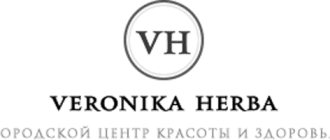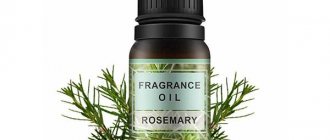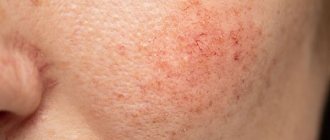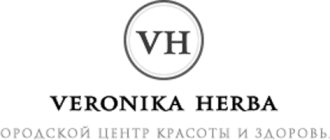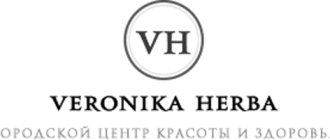Facial cleansing for rosacea. Scrubs and rosacea
It is impossible to cleanse the skin with a scrub containing hard abrasive particles; it injures sensitive skin with fragile blood vessels.
But soft enzyme peels with plant enzymes papain and bromelain and delicate exfoliant creams are suitable. Traditional medicine recommends masks made from berries, fruits and vegetables for cleansing. Unfortunately, with symptoms of rosacea and rosacea, even these seemingly innocent methods can cause harm - untreated acids severely irritate the skin. Any cosmetic product is applied with your fingertips - mittens, hard sponges and brushes cannot be used. An ideal home remedy for daily cleansing is micellar water for sensitive skin. It easily replaces washing. If you have a habit of washing your face with tap water, then it is better to install a filter, because the alkali that is present in the water dries out the skin greatly. Salon cleansing procedures for vascular disorders
Salon procedures will also not please you with variety. Numerous cleansing procedures - manual, mechanical, laser, vacuum and even atraumatic cleaning, dermabrasion, brushing and almost all types of peeling are not suitable, these methods are too aggressive. But you need to regularly cleanse your pores and get rid of dead skin cells, regardless of your skin type and problems. And many people experience the symptoms of rosacea and rosacea, so there is a solution.
First of all, this is ultrasonic cleaning, the softest available. The method is based on the influence of high-frequency ultrasonic vibrations. Under their influence, cellular metabolism is activated, comedones and keratinized skin particles are removed, without damaging the epidermis. With the help of such cleansing it is difficult to remove deep comedones, but it can be done constantly, so the results will be, just not immediately. Oily skin can be cleaned with ultrasound once every seven to ten days, dry skin - once a month. The procedure lasts only 15 minutes. Its cost starts from 2500 rubles. But with severe rosacea, even such cleaning is not recommended, although the final verdict is made by a specialist - the matter here depends on the specific location of the vessels. We remind you that a specialist decides whether the method is safe for your skin. Other contraindications include herpes, eczema, skin tumors, and acute infectious diseases. Pregnancy is a conditional contraindication; if the pregnant woman is in normal health, 7-8 minutes of operation of an ultrasonic handpiece with a frequency of 28-32 Hz will not harm the fetus.
What types of peeling will harm couperose skin?
Products that penetrate into the deeper layers should not be used for rosacea without consulting a specialist. Much depends on the severity of the disease.
Jessner Peel
Refers to chemical methods of influence. Opinions differ about the possibility of using this method in dilated vessels. Despite its high effectiveness, it has too strong an effect, so the condition of the skin after the procedure can only worsen.
Salicylic
Salicylic cleansing should not be done without consulting a cosmetologist. It gives a good result, eliminating flaking and moisturizing, but can cause serious irritation. It is not recommended to use this method in the later stages of the disease.
Glycolic
Glycolic acid-based cleansers are most often used to cleanse the face. They allow you to eliminate small wrinkles, improve complexion and get rid of unexpressed rosacea. You can remove inflammatory foci with a combination of glycolic acid and green tea. However, in the later stages of the disease, the use of glycolic peeling is not permitted.
You can find out what cleanings are allowed from the video:
Soda for rosacea. Base oils
As a rule, treatment of rosacea at home is not complete without base oils. We are talking about Japanese mint, cumin oil, rosemary and lemongrass. Separately, it is worth noting grape seed oil, it contains a huge amount of vitamin P, which prevents the fragility of blood vessels.
About 5 milliliters of grape seed oil must be mixed with a similar amount of wheat germ and avocado oil. To all these ingredients you need to add a small spoon of vegetable oil, previously infused with calendula flowers and St. John's wort. It is recommended to thoroughly rub the finished product into the affected areas of the skin in a circular motion.
To prepare the following remedy, you need to have cypress oil on hand, as well as vitamins E and A in capsules. In a container with a teaspoon of grape seed oil, you need to add a couple of drops of cypress oil and the same number of drops of vitamins of both groups. The finished medicine can be rubbed into cleansed skin before going to bed and added to face cream.
It is also recommended to add sesame oil, as well as tamanu and walnut oils to the masks. All these oils are auxiliary substances for most modern creams for rosacea.
Essential oils:
- Geranium - perfectly whitens the skin;
- Nerol - accelerates the renewal of skin cells and promotes accelerated resorption of vascular points and mesh on the skin;
- Rosemary - increases the elasticity of the vascular wall, tones the skin and regulates its water balance.
You can also use essential oils of cumin, chamomile, lemon balm, black currant and marjoram to treat rosacea at home.
Usually, to prepare a medicine, 10-15 milliliters of base oils (usually wheat germ and grape seed oil) are mixed with a specific or several essential oils at once. Here are a couple of proven ways to combine oils:
- To 15 milliliters of base oil you need to add a few drops of cypress and lemon essential oils. If you regularly lubricate the affected areas of the face with this product for several months, the redness will go away and the vascular network will become less noticeable.
- Approximately 2-3 drops of rosemary essential oil should be mixed with 5 milliliters of milk thistle oil. The resulting product can be rubbed into the skin up to 2 times a day. But it is best to do this after cleansing your face using special products.
- A couple of drops of chamomile essential oil can be mixed with mousse for washing and applied to the face for 15 minutes. You need to be treated in this way for 2-3 months, repeating the procedure 2 times a week.
You can come up with your own recipes by combining essential oils with base oils. You can also add vitamins P, K, A and C in small quantities to finished medicines.
Answers on questions
Can scrubs be used for rosacea?
Scrubs can be used only in cases where long-term remission is observed. But you need to choose products with minimal abrasiveness.
How often should you peel for rosacea?
The procedure cannot be repeated often. It is acceptable to perform it once every 2 weeks for 1.5 months, after which there should be a break for 3 weeks.
What restrictions should be followed if there is rosacea?
To achieve stable remission, it is forbidden to visit the sauna, bathhouse, or solarium. It is important to monitor your diet: give up alcohol, spicy foods, coffee, chocolate.
Reviews from those who have already tried it
Anna, 27 years old:
I was pleased with the results after milk peeling. It is more gentle (compared with glycolic), there is no irritation or redness after the procedure. The skin became fresher.
Lyudmila, 33 years old:
Coral peeling helped me a lot. There was a vascular network that almost disappeared after 5 procedures.
Margarita (cosmetologist, work experience – 15 years):
Azelaine peeling is a great thing for rosacea. You can use products that act superficially: these are milk, almond, phytic, and also enzymatic. The interval between procedures must be at least 14 days. Be sure to strengthen the blood vessels after the procedure. It is also important to thoroughly moisturize your skin.
Lemon for rosacea. Cuperosis in a child
Why do the walls of blood vessels lose their elasticity and begin to expand, forming visible defects on the face?
Any cosmetic procedures (professional and independent, salon and home) will only have a temporary effect if the root cause of the disease is not identified and eliminated.
Congenital rosacea
There is congenital telangiectasia, which is a consequence of various diseases:
- Louis-Bar syndrome (immunodeficiency state);
- Rendu-Osler disease (hereditary weakness of blood vessels that constantly bleed);
- Encephalotrigeminal angiomatosis (tumor formed by capillaries).
It is almost impossible to fight such rosacea, since these diseases require lifelong complex treatment with very low chances of recovery. If you have congenital telangiectasia, you will have to go to beauty salons every year to eliminate the external defect on the face.
Acquired rosacea
Acquired rosacea is a consequence of other, less dangerous and serious diseases, as well as an incorrect, unhealthy lifestyle, poor-quality or insufficient skin care and many other factors, depending or not depending on the person. Doctors call the following the most common causes of acquired telangiectasia:
- Hereditary weakness of vascular walls, which, under the influence of any external factors, instantly deform and expand;
- Rosacea - the appearance of rosacea on the face;
- Connective tissue defects, which are a consequence of diseases such as scleroderma (inflammation of small vessels), lupus erythematosus (immune damage to capillaries), dermatomyositis (swelling of blood vessels);
- Venous insufficiency;
- Constant temperature changes and frequent tanning: those who like to visit baths, saunas, and solariums are susceptible to rosacea;
- Liver pathologies - cirrhosis, hepatosis, hepatitis, etc.;
- Endocrine disorders - diabetes, thyroid disease, adrenal insufficiency, premenstrual syndrome;
- Hormonal imbalances due to puberty, pregnancy, menopause, long-term or unnecessary use of hormonal drugs (for example, contraceptives), as well as long-term local use of corticosteroids;
- Smoking and alcoholism are the worst enemies for blood vessels, so rosacea most often affects the faces of people prone to bad habits;
- Unbalanced diet: passion for fatty and spicy foods, ignoring fruits and vegetables, abuse of carbonated drinks;
- Unstable nervous system: blood vessels directly depend on pressure, which, in turn, is largely determined by the psycho-emotional state of a person - with constant worries, stress, depression, the capillary walls cannot withstand the load.
Drug treatment for rosacea
Treatment of rosacea with antibacterial drugs For these purposes, tetracycline drugs, macrolides (erythromycin and azithromycin) and inidazoles (metronidazole) are used. It should be noted that all antibacterial drugs are used orally and for a long time (up to about 2 months). Treatment with antihistamines Among the main antihistamines, their representatives of the 3rd and 4th generations are widely used. Such medicines can be used both in tablet form and in the form of ointments. Antihistamines for rosacea are often used in combination with hardware and other treatment methods. Additionally, during periods of exacerbations, steroidal anti-inflammatory drugs are prescribed along the way.
NON-INJECTION CARBOXYTHERAPY
It is a technique for saturating the skin with carbon dioxide. This skin rejuvenation technique is based on the use of carbon dioxide. Recently, subcutaneous injection of medical carbon dioxide into the skin has become extremely popular. However, today more and more women prefer non-injection use of this substance. Thanks to the session, it is possible to maintain the integrity of the skin, which makes the procedure safer.
This procedure is usually prescribed for the following indications:
- normalization of skin tone and texture;
- providing a lifting effect, combating photoaging and biological aging of the skin;
- elimination of acne and changes on the skin after it;
- restoration of the epithelium after the use of damaging techniques;
- therapy of rosacea and vascular pathologies on the skin;
- muscle strengthening;
- fight against scar changes;
- fight against swelling;
- reduction in the number of wrinkles, as well as the degree of their severity.
- In addition, with the help of carboxytherapy, it is possible to increase the effectiveness of cosmetic procedures, especially chemical peeling.
Despite the universality of the procedure, a number of contraindications still exist:
- Chronic neuralgic diseases.
- Acute inflammatory processes.
- Mental disorder.
- The period of gestation and feeding of the child.
- Thrombophlebitis.
- Diseases of the heart, kidneys and lungs.
- The use of carbonic anhydrase inhibitor drugs.
If you have one of the above diseases, the procedure will need to be postponed until complete recovery.
IONOPHORESIS
Iontophoresis in cosmetology is carried out with the aim of transporting ions under the skin. This is done due to a low-power galvanic current; it does not damage the dermis and does not cause a violation of its integrity. Iontophoresis not only helps to introduce medicinal substances into the dermis without injections, but also removes dead cells and impurities of various natures.
The impact of the procedure is expressed in the following changes:
- Launch and revitalization of local metabolic processes.
- Increased vascular and muscle tone.
- Improving blood supply to tissues and blood flow.
- Increased skin permeability.
Iontophoresis in cosmetology solves many problems of various nature. Indications for the procedure are very varied:
- Signs of early aging.
- Disturbance of water balance in the dermis.
- Cellulite, local fat deposits.
- Accumulation of waste and toxins.
- Puffiness and bags under the eyes.
- Blackheads, enlarged pores, increased sebaceous secretion.
- Reduced skin tone, loss of elasticity.
- General signs of skin fatigue (uneven texture, dull color, etc.).
- Nutrient deficiency in the off-season.
- Scars from mechanical damage to the skin or acne.
- Dark spots.
It is also possible to perform iontophoresis for hyperhidrosis; it is believed that the procedure, although it does not completely solve the problem, significantly improves the situation.
Before the procedure, you must ensure that there are no contraindications. Iontophoresis is not performed when:
- Individual intolerance to electric current.
- Presence of pacemakers.
- The presence of metal implants in the affected area.
- Pregnancy.
- Oncology.
- Chronic skin diseases, foci of inflammation in the problem area.
- Hypertension.
- Infectious diseases, reduced immunity and fever.
- Lesions of the endocrine system.
- Chronic diseases of the heart, blood vessels, internal organs in the acute stage.
- Epilepsy and nervous disorders.
If the technology of the procedure is followed, it is safe for human health. Before undergoing the procedure, you must consult a dermatologist.
PLASMOLIFTING
This is a cosmetic procedure during which active substances are injected under the patient’s skin. The peculiarity of this effect is that the patient’s own blood plasma acts as the active components. To do this, from 20 to 100 ml of blood is taken from him and plasma is separated from it in a special centrifuge. The process itself consists of injecting it under the skin of the face to a depth of 3 mm. This promotes the activation of stem cells and overall rejuvenation of the facial skin. This method is suitable for those who are afraid of exposure to chemicals and the associated negative consequences; here everything is natural and natural, done in the presence of the patient. Storage of such a drug is excluded; new blood is taken at the next session. To achieve maximum effect, 4-5 sessions are usually required, but the exact number can be determined by the doctor, it all depends on the severity of the case and the result the patient wants to get.
The break between sessions is on average 2 weeks, during which time the face has time to rest and the plasma has time to begin its beneficial effects. Possibilities of plasma Blood plasma has unique properties, thanks to it the body's stem cells are activated, metabolism improves and, as a result, the condition of the skin significantly improves, it becomes much younger and fresher. The effect can last quite a long time, but over time the procedure must be repeated.
Plasmolifting differs from other methods in cosmetology in that it is absolutely safe and does not cause allergies or other side effects. The effect of the procedure is not only long-lasting, but also increasing and can last for several years. This method of treatment involves a certain amount of pain, and this scares many; in fact, the sensations are quite tolerable. The result will show itself in 8-10 days, when the plasma shows itself in all its capabilities.
Among the main indications for a course of treatment using plasma therapy are:
- age-related changes;
- pale or unhealthy skin color;
- sagging, excessive dryness or oily skin;
- skin laxity due to weight loss;
- acne;
- consequences of excessive use of solarium;
- the presence of wrinkles, including deep ones.
Like any method of treatment, this also has its contraindications:
- pregnancy at any stage;
- lactation;
- inflammatory or infectious diseases;
- oncological diseases of any form and stage, even predisposition to them;
- hepatitis of any form;
- blood diseases;
- taking blood thinning medications;
- HIV; other viral diseases.
The result after a course of treatment, which usually lasts 5-6 sessions, will not be noticeable immediately. You need to wait 8-10 days for the injected plasma to start working. As a result, the skin noticeably brightens, wrinkles become less noticeable, and in some cases disappear altogether, and acne disappears. A positive result usually lasts 1.5-2 years.


